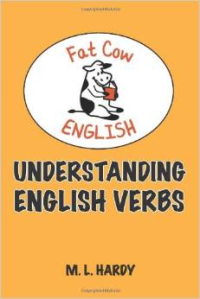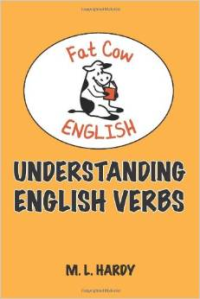The 12 English Tenses – A brief summary
If you are able to read this, then you have already learnt the most difficult of the twelve English Tenses: Present Simple. Congratulations! It gets easier from now on. Really.
How can we have 12 tenses? Surely there are only three: present, past, and future?? Well, yes, but we express time in more than three ways.
♦ We use SIMPLE Tenses to express:
∗ action/states anytime, sometimes, always – Present Simple
∗ action/states in the finished past – Past Simple
∗ action/states in the future – Future Simple
♦ We use CONTINUOUS Tenses to express CONTINUING actions / actions IN PROGRESS. The actions are temporary.
♦ We use PERFECT Tenses to express actions or states which connect TWO TENSES. Time doesn’t stand still, does it? The past affects the present, the present affects the future. They are all connected and the PERFECT Tenses express them perfectly.
I shall give details and examples below. Click on the links to read my previous posts which give more information about particular tenses or to an Internet site which gives more information and practice exercises.
SIMPLE TENSES x 3
1. Present Simple
This is often the most difficult tense for students because it doesn’t always refer to the present. It is often confused with Present Continuous.
Which tense can you use to describe …
♠ facts or the state of things?
Tokyo … in Japan. Sharks … dangerous. An octopus … eight legs. This watch … to my grandfather.
Let’s try Present Continuous Tense:
Tokyo is being in Japan. Sharks are being dangerous. An octopus is having eight legs. This watch is belonging to my grandfather.
** We use Present Continuous Tense to describe something which is in progress now and is temporary. This is not true of the sentences above. There is no temporary action in progress. We cannot use Present Continuous. We must use Present Simple:
Tokyo is in Japan. Sharks are dangerous. An octopus has eight legs. This watch belongs to my grandfather.
Which tense can you use to describe …
♠ opinions, feelings, things which are always true or permanent?
I … in ghosts. Most people … snakes. Water … at zero degrees.
Let’s try Present Continuous Tense:
I am believing in ghosts. Most people are hating snakes. Water is freezing at zero degrees.
** Again, we are not describing temporary actions, so we cannot use Present Continuous Tense. We use Present Simple:
I believe in ghosts. Most people hate snakes. Water freezes at zero degrees.
Which tense can you use to describe …
♠ habits & routines?
Andreas … up at 6.00am every morning. He … work at 9.00am. He … out every Saturday night with his friends.
Let’s try Present Continuous Tense:
Andreas is getting up at 6.00am every morning. He is starting work at 9.00am. He is going out every Saturday night with his friends.
** We are not describing temporary actions in progress now. Andreas is not getting up now. He is not starting work now. We are describing habits, routines that are repeated, so we cannot use Present Continuous Tense. We use Present Simple:
Andreas gets up at 6.00am every morning. He starts work at 9.00am. He goes out every Saturday night with his friends.
2.Past Simple
Past Simple is used to describe actions or states which started and finished in the past. There is no connection to now.
♠ A shark attacked a tourist at Backwash Beach yesterday.
♠ Andreas got up at 6.00am this morning and started work at 9.00am.
♠ He went out last Saturday with Pablo and Patrik.

Last Saturday, 9.00pm – Andreas at the pub with his friends
http://www.huffingtonpost.com
∗∗ Past Simple sentences must always refer to a time in the past. If you say to a native speaker, ‘A shark attacked a tourist at Backwash Beach’, he will ask ‘When?’ If you say, ‘Andreas went out’, the native speaker will ask ‘When?’ because the sentences are not finished. Read some newspaper reports and you will see past time markers (eg. yesterday, last year) in the articles which use Past Simple.
∗∗ The past time does not need to be stated if it is understood: Question: ‘I heard that Andreas went out last Saturday. Who did he go out with?’ Answer: ‘He went out with Pablo and Patrik.’ You don’t need to repeat ‘last Saturday’.
3.Future Simple
Future Simple is used to refer to decisions, predictions, promises, offers, and schedules at some time in the future, which is not always stated. We do not use Future Simple for plans: Kumiko will start an English course next week.

http://bhsworldlitopedia. wikispaces.com
♠ I think that Brazil will win the next World Football Cup.
♠ I promise that I will always love you.
♠ I’ll see you later.
♠ I’ll help you with your homework if you like.
♠ The next train will leave at 7.00pm.
♠ If I don’t study, I won’t pass the test.
CONTINUOUS Tenses x 3
1.Present Continuous
We use Present Continuous to describe what is happening now; an action which is in progress and has not finished, a temporary action:
♠ I am writing this post about tenses. (I’m not finished yet.)
♠ You are reading this post. I don’t know what else you are doing. Perhaps, you are drinking coffee while you are studying English tenses. Perhaps, you are having a conversation with someone while you are reading this.
2.Past Continuous.
Past Continuous is used to describe an action which was in progress at the same time in the past as another action, or at a particular time in the past. Look at the photo above of the three men. When you describe what was happening at the time the photo was taken, you use Past Continuous:
♠ Andreas and his friends drank a lot of beer while they were watching the soccer match at the pub.
♠ At 9.00pm last Saturday, Andreas and his friends were watching the soccer and drinking beer at the pub.
∗∗ We do not use Past Continuous without a reference to the time or the action that happened at the same time.
Andreas was watching soccer at the pub last Saturday.
Andreas was drinking beer at the pub last Saturday.
∗∗ In the above two sentences, there is no reference to the time Andreas was watching TV or drinking beer. There is no reference to action that was happening at the same time. So, we cannot use Past Continuous. We must use Past Simple: Andreas watched soccer at the pub last Saturday. Andreas drank beer at the pub last Saturday. These two sentences answer the Past Simple question, ‘What did Andreas do last Saturday?’
3.Future Continuous
Future Continuous is used to describe an action which will be in progress in the future. It will not be finished.
♠ At 9.00pm next Saturday, Andreas and his friends will be drinking beer and watching sport on TV in the pub.
♠ At 8.45pm tomorrow night, I will be eating at an Indian restaurant with my husband.
♠ One hundred years from now we will all be driving flying cars!
PERFECT TENSES x 3
1.Present Perfect
Present Perfect Tense sentences are full of information. You can have one sentence to talk about the past, one sentence to talk about the present, and one sentence to talk about the time in the middle; OR, you can have ONE sentence in Present Perfect, which will give you all the information from the 3 sentences more clearly and efficiently.
♠ The singer James Blunt has sold 20 million albums.
∗∗ This sentence tells us about experience in the singer’s life, and that James Blunt 1) started selling albums sometime in the past and 2) this action continued from that time until 3) now. If we use Past Simple – The singer James Blunt sold 20 million albums – we are talking about the finished past. However, James Blunt is alive and well, his albums are for sale now. We would use Past Simple to talk about Michael Jackson. – He sold millions of albums in his life. His life sadly is finished and there is no connection between Michael Jackson and the present. Present Perfect always connects the past and the present. Look at what makes up the Present Perfect Tense: one present tense verb – HAVE or HAS, and one past tense verb – PAST PARTICIPLE. Present + past = Present Perfect Tense.
2. Past Perfect
Past Perfect is used to express an action which happened in the past before another action in the past, or an action which happened before a specific time in the past.
♠ When I got home at 6pm last night, my husband had cooked my dinner.
** This sentence tells us about two times in the past: 6pm last night, and a period of time before 6pm last night:
I got home at 6pm.
My husband cooked dinner before 6pm.
Compare the following Past Simple sentence:
♠ When I got home at 6pm last night, I cooked dinner.
** This sentence tells us about two actions in the past.
I got home at 6pm last night.
I cooked dinner last night.
We know that I cooked dinner after I got home because I couldn’t cook dinner while driving or walking home. Also, ‘when’ can mean ‘just after’. However, it is not always this obvious which action happened first if we just use Past Simple:
♠ This morning, I went to the gym and I prepared some lessons.
** Which action happened first? This sentence doesn’t tell us. It’s not important.
♠ The plane had taken off by the time Thomasz arrived.
** This sentence tells us that Thomasz missed the flight because he arrived after the plane took off.
♠ He missed his flight because he hadn’t set the alarm clock.
** He didn’t set the alarm clock so he missed his flight.
3. Future Perfect
As with all Perfect Tenses, Future Perfect connects two time frames. However, one action occurs before a second action which is in the future.
♠ By the time Andreas graduates next month, he will have completed three years of study.
** Andreas started studying nearly three years ago.
♠ Next March, we will have been married for ten years.
** We got married nearly ten years ago.
PERFECT & CONTINUOUS Tenses x 3
1.Present Perfect Continuous
With Present Perfect Continuous, an action or event began in the past and is in progress now. (Perfect Tenses = two times are connected.) It may still be continuing. The focus is on the length of time:
♠ Andreas has been studying English for nearly three years.
** How long? Three years.
The difference between Present Perfect Continuous Tense and Present Perfect Tense is that with Present Perfect Continuous, the focus is on ‘How long?’, and with Present Perfect, the focus is on ‘What?’ (‘When’ is not important.)
♠ Andreas has studied French and Spanish as well as English.
** What? French and Spanish.
2. Past Perfect Continuous
Past Perfect Continuous Tense is used to describe an action or event that started in the past and continued until a second time in the past. As with other Continuous Tenses, the focus is on something in progress and its duration. As with other Perfect Tenses, the focus is on connecting two times.
♠ I had been waiting for the bus for an hour when I decided to walk home.
** We often use Past Continuous instead of Past Perfect Continuous but this can change the meaning:
Examples: (from www.englishpage.com)
- He was tired because he was exercising so hard.
This sentence emphasizes that he was tired because he was exercising at that exact moment. - He was tired because he had been exercising so hard.
This sentence emphasizes that he was tired because he had been exercising over a period of time. It is possible that he was still exercising at that moment OR that he had just finished.
3. Future Perfect Continuous
This tense is used to show an action or event that will continue up to a particular time in the future. As with other Continuous Tenses, the focus is on something in progress and its duration. As with other Perfect Tenses, the focus is on connecting two times.
♠ By the time Pablo goes on holiday next month, he will have been studying English nonstop for six months.
♠ By April next year, I will have been teaching at Langports English Language College for nine years.
Summary:
Simple Tenses x 3
Continuous Tenses x 3
Perfect Tenses x 3
Perfect & Continuous x 3 TOTAL TENSES = 12
___________________________________
As I said at the beginning of this Post, Present Simple Tense is the most difficult for students to understand. Present Perfect Tense is the next most difficult; it takes a while for students to realise that even though much, if not all, of the action being described took place in the past, the time period is not finished.
That leaves ten more tenses. These are all logical. They all follow logical steps. In English, we can always find a tense to express ‘when’ exactly. The 12 tenses in English cover all possibilities of real time. We also use adverbs of time: yesterday, while, for an hour, by the time, etc. to give more information ….. but that’s a Post for another day!
♠ ♠ ♠ ♠ ♠ ♠ ♠ ♠ ♠ ♠ ♠ ♠ ♠ ♠ ♠ ♠
For a VISUAL Guide to the easy steps in conjugating the 12 English Tenses, check out my book, Understanding English Verbs available from Amazon:










Thanks for sharing this blog as it is quite informative and helpful
keep up the good work
LikeLike
Thank you for your positive feedback!
Mary
LikeLike
Thank you very much !
LikeLike
You’re very welcome Dulansa!
LikeLike
Thank you so much. This content will help me a lot.
LikeLike
I’m so glad my blog was helpful Maria. Thank you for letting me know!
LikeLike
Thank you for sharing this blog. I`ve learned a lot about verb tenses.
LikeLiked by 1 person
I’m happy to hear that! Thanks for letting me know.
LikeLike
Pingback: 12 thì trong Tiếng Anh - Efis English
Great summary! Very neat and clear
LikeLike
I’m glad it was helpful! Why don’t you subscribe? It’s free and you will receive an email whenever I post new material.
LikeLike
thank you so much for this post, i had been appreciating it. good luck to you
LikeLike
Amazing article, thank you very much!
LikeLike
I’m glad you liked it Alan. Thanks for letting me know. 🤗
LikeLike